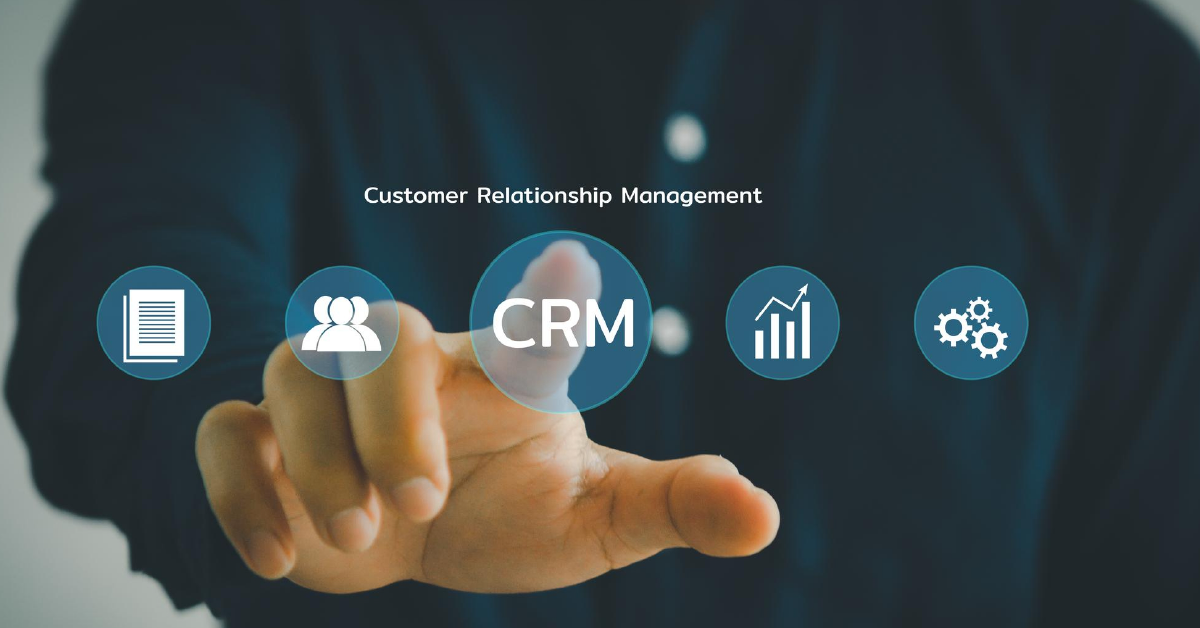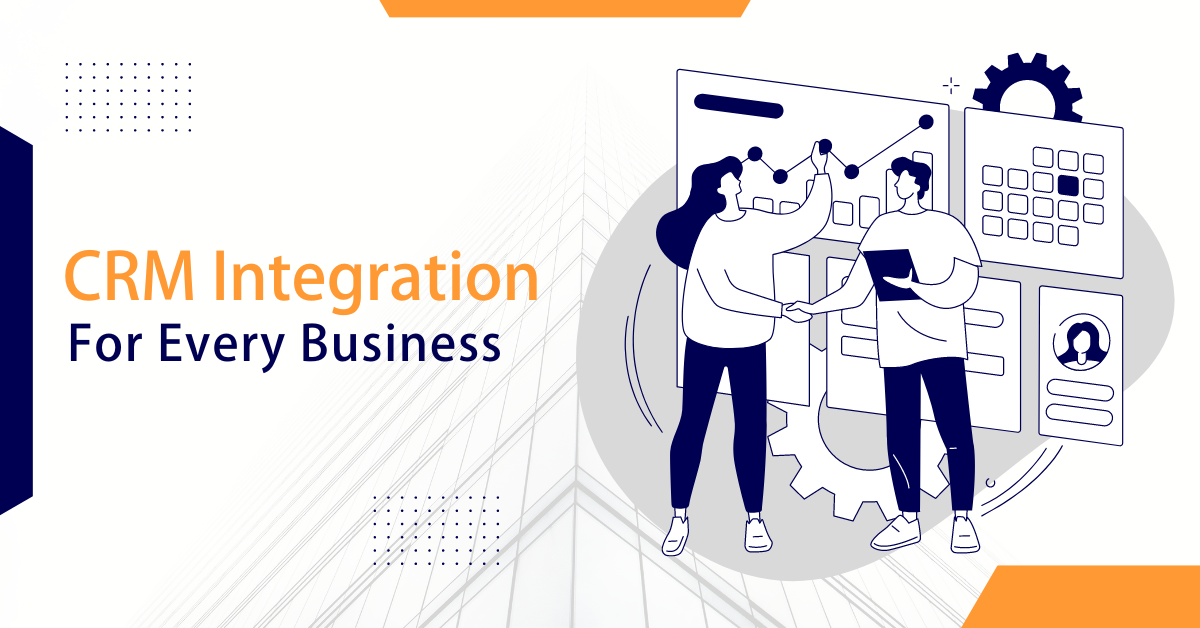Embracing CRM: Guide to Easy Integration

5 min read
This blog will give you a quick look at the CRM (customer relationship management) integration process.
Integration is the process of connecting two systems. So that they can work together in order to achieve a unified goal. Integrating CRM solutions into your call center or office phone system can help you offer customer service from multiple angles. And make it easier for your staff to work together.
Let us see why it is important and how systems with office phone service or cloud-based call center software can empower more effective customer service for your company.
CRM Is Important For Customer Service
The majority of your customers probably interact with you or your company through phone or email. With most customer service today, the customer, whether they are calling in or sending an email, is left having to relay all of their information and details without any help from your company. Inconsistent information gathering from customers will lead to a lack of trust and leave you faced with unhappy customers. If a customer has to repeat themselves multiple times in order to get all the information that they need. It’s highly likely that they will just abandon the process altogether.
Integrating CRM solutions into your call center or office phone system can help you offer better service in more ways than one. You can answer customer phone calls from multiple locations, gather more detailed information about potential customers, and relay that information to the appropriate departments without having to ask.
Best office phone service or call center software will allow you to have multiple agents take the same call from their desk. If a customer calls from somewhere, there is no problem with answering to relay that information in order. This gives agents time and opportunity to get important facts about potential clients over the incoming voice call while taking less work off of them.
Integrating your CRM system with your call center or office phone service allows you to create a database of all of your clients. You can even take this a step further and integrate your CRM solutions with your appointment scheduling software. This will give you the ability to not only note important data from each client but to link those details to future meetings, appointments, and events that they need to attend with you.
If you have multiple agents working within the same company, integrating CRM phone systems into their call center or office phone system makes it possible for them to share data at the same time.
As with any business technology, it is important to begin by setting clear goals for integration. Determine how your CRM system will work with the rest of your business operations to improve customer engagement and productivity. Further, once you have determined what you want from integration. It is important to look for more than just a means of communication.
What specific tasks or processes do you want to improve with CRM integration?
Common Goals Include
Enhancing Customer Data Accuracy
Customer relationship management will help you ensure that all data being processed by your CRM system is accurate and useful. For example, you may want to track certain sales figures or customer contact information, such as customer email addresses.
Improving Order Management
Reports of poor order management are common in many industries today, ranging from tech companies. It has faced growing scrutiny over its shipping issues to the increasing demand for on-demand solutions. An important aspect of order management is increasing customer communication through notifications or calls. Thus, CRM integration can save time and money by streamlining your operations.
- Streamlining sales and marketing efforts: It allows you to establish a shared set of standards.
- Reducing manual data entry: Integrating CRM with your web presence helps you save time and effort while increasing customer satisfaction.
- Improving operational efficiency: By integrating CRM with other business tools, you can cut out redundancy. And tedious operations, saving time and money.
Evaluate Your Current Systems
Before you begin integrating your CRM system, it is important to evaluate your current systems to ensure a smooth transition. This way, you can determine where to place your greatest focus in terms of integration efforts. It is essential to understand your current business needs and systems. Look at the tools you are currently using and determine if any of them need to be replaced. In addition, look at which tasks within your current business systems could be streamlined or improved with CRM integration. For example, if you are currently using spreadsheets to track sales leads, you might use a CRM system to help automate lead tracking.
Determine what data you will need to integrate from your current systems into your CRM system. Make sure you are aware of all relevant data sources for each system so that no important data gets left out of the integration process.
Find the Right CRM Integration
Selecting the best CRM integration for small business isn’t as simple as choosing a brand, a package, or even the cheapest option. A good CRM phone system is one that suits your specific business needs. So before you start evaluating solutions, it’s vital to complete an in-depth analysis of your business requirements. This will help you identify your true needs and highlight potential areas of improvement for CRM integration.
CRM systems are notoriously complex, so it’s important to work with a partner who has a deep understanding of this technology. After all, your integration partner will be advising the best methods for integrating with other business processes and tools. Therefore, it’s vital that you choose an integration specialist with knowledge of the industry and expertise in delivering successful integrations. Look for integration partners who understand how CRM systems work and have experience with integrating them into complex business environments.
Prepare Your Data for Integration
CRM systems often store vast amounts of data about your customers and business operations, so it’s essential to prepare this data for integration. Some of the most important steps include:
- Ensuring your data is accurate: You don’t want inaccurate data to cause issues during integration. So you’ll need to verify its accuracy and fix any errors. To do this, you’ll need to examine the quality of your data and identify any key issues that could affect the integration process.
- Ensuring your data is complete: You will also want to ensure that your data is complete, containing all the relevant information for integration. Eliminating gaps or holes in your customer or business data can prevent delays and other problems during the process.
- Scrubbing sensitive customer information: Some types of customer data contain potentially sensitive info. Such as credit card numbers or bank details. To avoid exposing this data, it’s essential to scrub the data and remove any sensitive information.
- Transferring all relevant data: You’ll need to transfer all of your customer and business data into your new CRM system if you want a successful integration. So you’ll want to identify all the relevant sources of data and transfer it into the CRM phone system. This means you’ll need to compile a list of key sources that hold relevant customer information.
Develop an Integration Road Map
Your integration roadmap will serve as an overview of your journey with CRM integration, helping you plan out the entire process and highlighting any potential obstacles, issues, or risks along the way.
Published: November 7th, 2023
Subscribe to Our Latest Updates
Get monthly product and feature updates, the latest industry news, and more!



